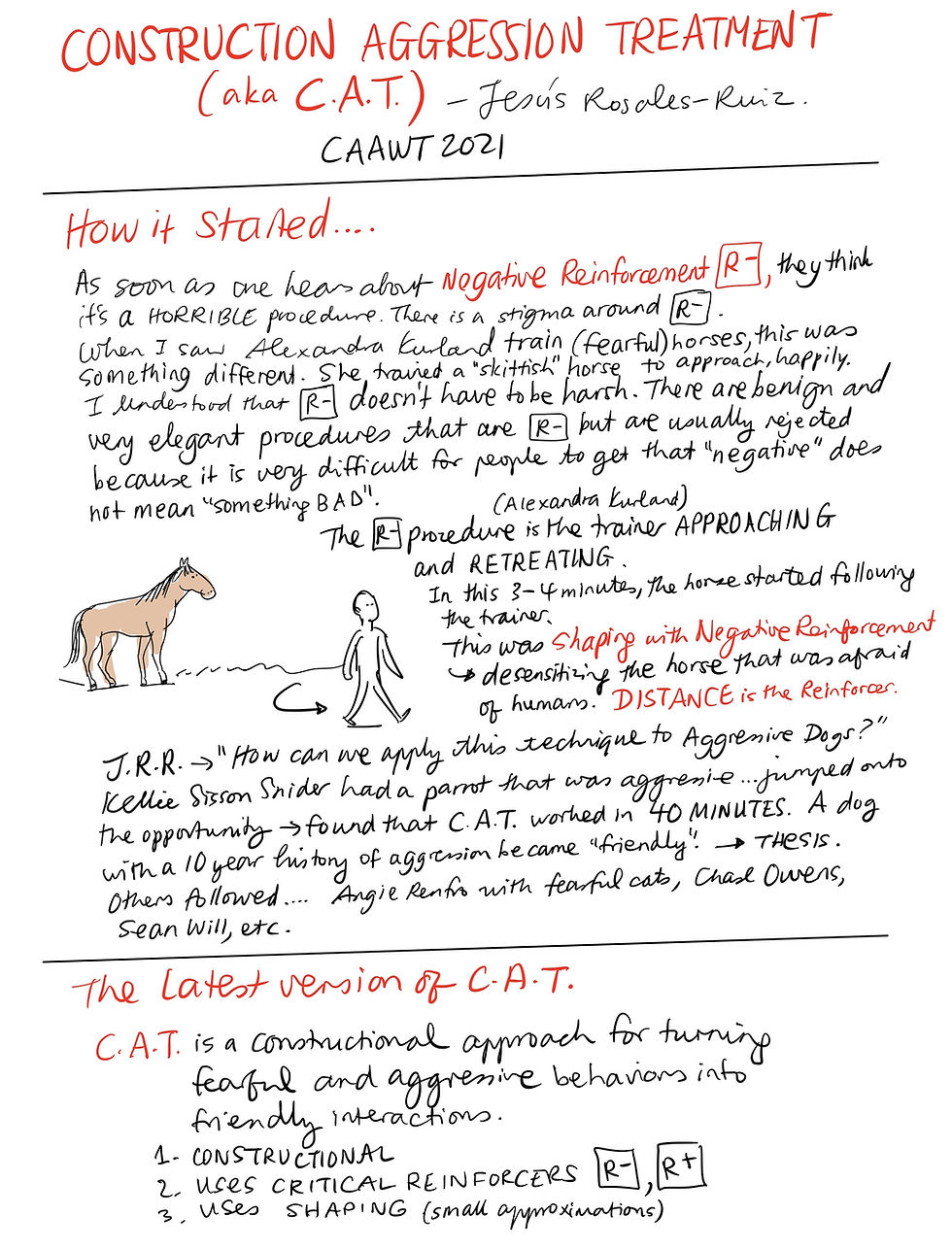I first heard of C.A.T. back in around 2010 when I, a new dog person, had written to a Dogster.com behavior advice column asking for help with my "aggressive dog". I wanted to know how to make my dog like people (and not try to bite them), and Grisha Stewart responded by telling me to throw out the prong collar and look into C.A.T. as well as B.A.T., a behavior change program she was developing based on C.A.T.
At the time, I couldn't find anything detailed on C.A.T. , but I found a Yahoo "Functional Rewards" group and lurked. I was lucky to connect with trainers who were using B.A.T, and the rest is history.
I had the privilege of illustrating Grisha's books on B.A.T. (versions 1 and 2) and am still honored to be working with her! (PLUG: webinar on Doggie Language - August 2021)
So a lot of this information about functional reinforcers and using DISTANCE as a (negative) reinforcer is already familiar to me. I will never forget our first B.A.T. session with Sarah and Fred (her husband) dressed up as a mailman approaching our front porch. (Our porch was where Boogie had bitten people.)
I am aware that I didn’t generalize this training to enough other/different locations where we could repeat it consistently. It was hard to find a good training environment because I lived in a busy neighborhood and had no private yard and I would have to drive miles away to find some sort of peaceful park with no off-leash dogs. Which meant that I was always at risk of creating extra stress for Boogie. It is so important with functional reinforcement procedures that the environment is set up right... something that was hard for me to do.
On the streets, I used counter conditioning - paired food with human triggers - and while I had successfully taught Boogie to turn towards me for treats in the presence of strange people, I am not sure I changed his feelings about them. He had simply learned to ignore them/to not to bite them or lunge at them within a certain closer distance, and in the meantime I had acquired amazing distance-management skills which is what got us by and kept Boogie happy and relaxed for the rest of his senior years. (Interestingly, Boogie's "reactivity" completely disappeared when he started prednisone for his brain tumor)
There was a period when B.A.T. and C.A.T. procedures came under attack because they were Negative Reinforcement R- procedures and therefore deemed aversive. Back then I didn't know anything about the SWITCH OVER process - that point in the training process when "friendly behaviors" happen... when the dog becomes curious and interested in the decoy, and what to do from that point forward. Back then, we didn't have any information (or at least I wasn't aware of this) about how to go from R- to R+.
The several times that we did B.A.T sessions with Boogie, we saw him become "friendly" with decoy humans and dogs, and ended the sessions at that point. Boogie never saw those decoy humans and dogs ever again.
This was a really great and clarifying presentation by Jesus Rosales-Ruiz. I can see the direct influence on Grisha Stewart's B.A.T. (letting dog initiate/ handler not asking for behaviors) and Amy Cook's "The Play Way" (where dog's ability to PLAY is a gauge for whether the dog is "back to normal" after seeing the stimulus) There were also videos showing the different steps all the way to the goal behaviors.
I will also share my notes from Sean Will's Constructional Affection presentation later.
Notes from Jesus Rosales-Ruiz's presentation:






Comments